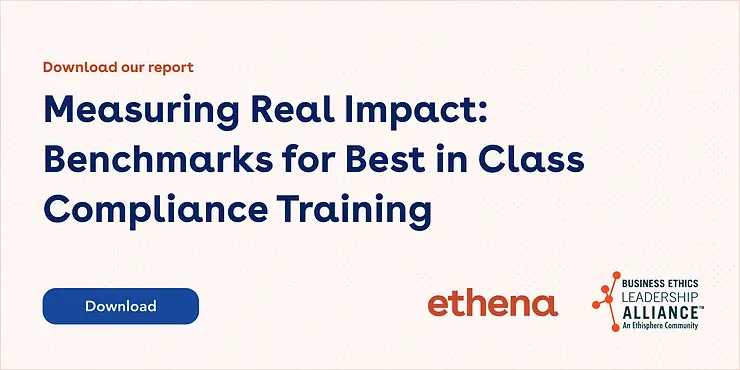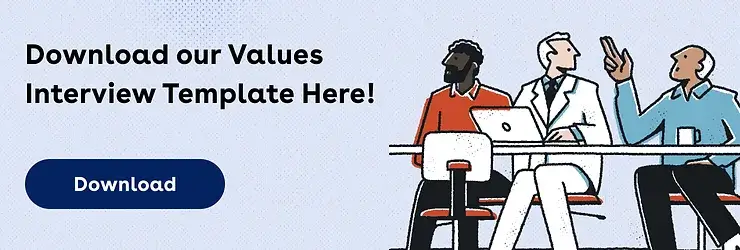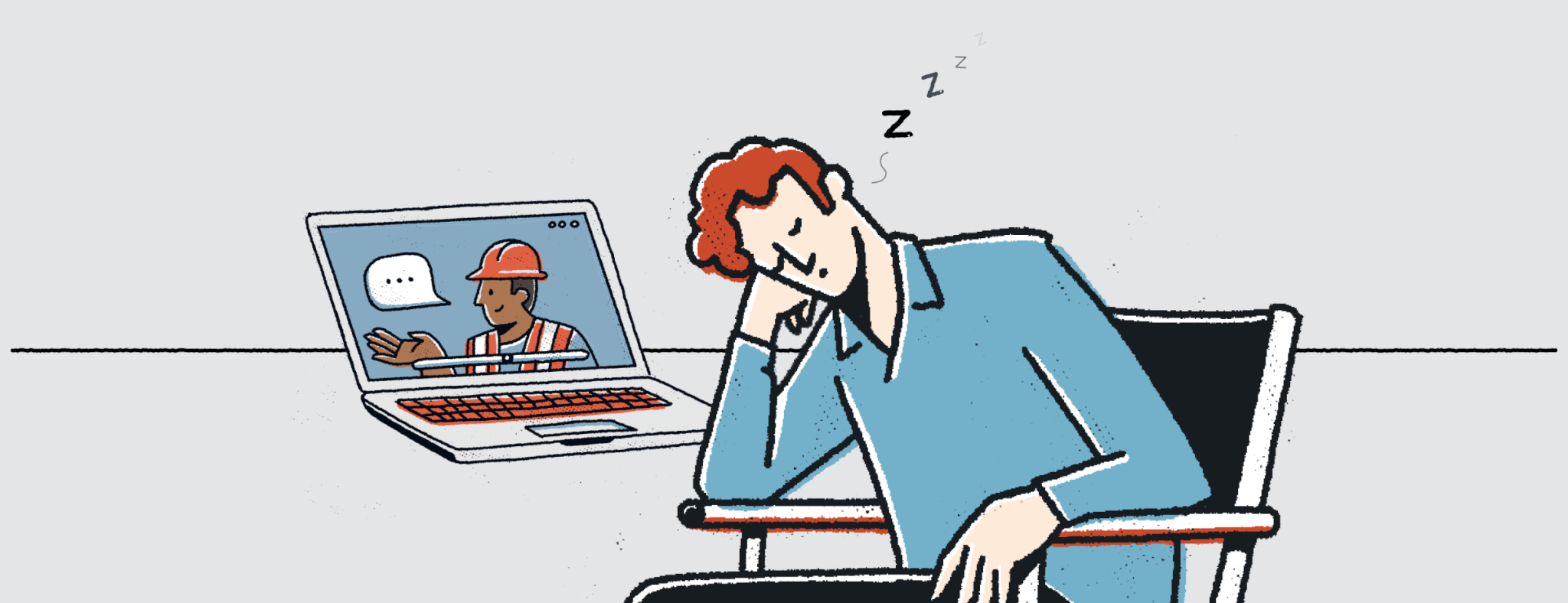Most of us like to think we’re open-minded. Sure, we have personal beliefs, but when presented with evidence that supports opposing views, we’re willing to reevaluate those beliefs from a critical approach … Right? You may be surprised to learn that the human brain is not quite so quick to reconsider what it already knows. In fact, with 13 types of bias in the workplace, changing our minds can be a very complicated process.
It turns out that our desire to confirm that we’re correct is stronger than our desire to change our mind when we get more information: A voter will pay more attention to supportive headlines of their favorite candidate than criticisms. A football fan might complain about almost any call the ref makes against their team. And if someone worries a friend is annoyed with them, they’ll be quick to interpret a delayed text response or unanswered call as “proof.”
This tendency to notice and favor information that confirms existing points of view isn’t an individual shortcoming. It’s an innate cognitive shortcut known as “confirmation bias,” and it skews our professional behaviors just as much as our personal ones — from hiring to building products, and even to shaping organizational values.
The good news? By understanding the influence of confirmation bias on the workplace and how to minimize its impact, you can improve your decision-making and create a more inclusive company culture.

What is confirmation bias?
The confirmation bias definition is a psychological tendency to both seek and pay more attention to information that supports personal beliefs, and to discount information that contradicts those beliefs or supports opposing views.
In a nutshell, it is our human tendency to favor information that confirms existing points of view is called confirmation bias, and it can have big consequences in the workplace.
Confirmation bias is not a conscious choice. As a type of unconscious or implicit bias, it influences how we think without us knowing. As we grow up, our brains organize information into schemas, or patterns of thought. Over time, we selectively perceive and interpret information through these schemas, rather than engaging with information that prompts us to think outside of the box.
Types of confirmation bias
Studies show confirmation bias can impact how we engage with information in three main ways: how we gather information, interpret information, and even remember information.
- Biased search for information. When we research a topic or set out to answer a question, we subconsciously look for data that supports our pre-existing viewpoint or hypothesis. In 1960, Peter Wason was one of the first psychologists to introduce this idea: He gave students a sequence of numbers (2,4,6) and asked them to test other sequences to find the rule (hint: It was “increasing numbers”). Most participants tested sequences to prove their initial rule guess (e.g., even numbers, add two), rather than trying sequences that might disprove it and lead to alternate explanations.
- Biased interpretation. We are accepting of evidence that supports our points of view and critical of disconfirming evidence. In a 1979 study, researchers gave participants two made-up studies supporting or refuting capital punishment and asked them about the persuasiveness of the research. The results? Participants not only rated the study that supported their viewpoint higher—they also said their original opinions were even stronger than before reading both sides.
- Biased memory. Even if you search and interpret information with careful attention to confirmation bias, your memory may still filter things subjectively—a phenomenon also known as “selective recall.” For example, a 2015 study showed participants were more likely to remember reading abstract titles and social media posts that supported their points of view than reading ones that didn’t.
Why confirmation bias happens
If confirmation bias causes issues, why is it still such a core human characteristic? There are two commonly proposed reasons: efficiency and self-esteem.
Efficiency
Confirmation bias is simply, well, efficient. We are bombarded with information at work—from emails piling up in our inbox to news about our industry to feedback from customers—and we don’t have the capacity to question and fact-check everything.
Self-esteem
Confirmation bias may also protect our sense of self-esteem. Our most deeply held beliefs are often a core part of our identities, and realizing we’re wrong can feel shameful or embarrassing. The tendency to favor information that confirms our viewpoint can be interpreted as an effort to also confirm our worth and intelligence.

Examples of confirmation bias in the workplace
Efficiency, as it turns out, isn’t always effective. While confirmation bias, like every implicit bias, helps us interact with the world with ease, it also diminishes our ability to be objective. In the workplace, this lack of objectivity can lead to all kinds of negative consequences, such as poor decisions, reinforced stereotypes, and homogeneous cultures.
Poor decisions
Imagine your company has decided to launch one of two new products. One of your executives is convinced that Product B is going to sell fast, but the team wants to do market research first. Due to confirmation bias, the team already favors Product B. Unconsciously, they may find data, survey customers, and craft the report with information that supports what the executive wants to hear. The report looks great, you decide to launch the product, and… it flops.
Without the right criteria in place to mitigate confirmation bias, your company not only launched an ill-informed product—you’ll also never understand why it really failed.
Reinforced stereotypes
Filtering out disconfirming evidence makes it difficult to challenge and change stereotypes. Take a 2020 study that found people still implicitly associate men with “brilliance” more than women (even if they consciously claim otherwise). As lead author Daniel Storage explains, “Stereotypes that portray brilliance as a male trait are likely to hold women back across a wide range of prestigious careers.”
Let’s put this in context: You’re in a teamwide meeting and your colleague interrupts your boss to correct a statistic. If the colleague is a white cis-gendered man, his interruption might be interpreted as “smart”—fitting into the stereotype of brilliance—whereas a white cis-gendered woman might be perceived as being a “know-it-all” and a Black nonbinary employee as being “unprofessional.”
Homogeneity
Eventually, confirmation bias can lead to cookie-cutter company cultures. For example, recruiters may start to search for and filter resumes based on their preconceived notion of what contributes to success. If previous star employees went to Ivy League schools, worked at consulting firms, and had Master’s degrees, the recruiter would look for candidates with similar experiences, backgrounds, or points of view. After all, why mess with success?
Well, there are actually more than a few reasons to expand your idea of the “right” resume: Diversity improves decision-making, creativity, and financial returns. By acknowledging cognitive bias and evolving your hiring practice to attract diverse talent, you can actually benefit your entire company.

How to overcome confirmation bias in the workplace
While we’re all subject to confirmation bias to a certain extent, prioritizing evidence in company processes can minimize its negative influence on your workplace.
- Raise awareness that it exists. Train employees on implicit biases like confirmation bias and give your team the tools to engage in self-reflection. DEI training can be a great way to introduce and explain bias to your team.
- Write inclusive job descriptions. Eliminate opportunities for confirmation bias in hiring by revisiting the job descriptions and the interview process. Inclusive job descriptions should reflect the role rather than the candidate the manager expects to be the right fit. To accomplish this, consider removing items such as education requirements and required numbers of years of experience. Instead, focus on what kind of experience candidates are expected to have.
- Interview for values fit rather than culture fit. Clear company values help applicants understand how your company prioritizes, makes decisions, and reconciles conflict. This is more effective (and less subjective) than trying to find employees who “fit the culture” of your workplace.
- Require evidence in performance reviews. Performance evaluations are often subjective, making them a prime arena for implicit bias and biased memory. Tactics like requiring multiple points of evidence to back up manager ratings can help promote more equitable performance management.
- Encourage a culture of curiosity. The more you’re willing to prove yourself wrong, the more you’ll likely get right. Encouraging and creating space for peer feedback can help build a culture where feedback is welcomed rather than feared. Learning and employing feedback frameworks and dedicating time to feedback (e.g. “Feedback Fridays”) are two tactics to start with.
With the right tools and a deeper understanding of this implicit bias, you can create a culture of informed decision-making, open-mindedness, and collaboration.
This article has been updated for relevancy in May 2023. It was originally published in September 2022.
Ethena is a modern compliance training platform that delivers current, cringe-free content that employees actually enjoy. Our course on Diversity, Equity, and Inclusion brings the complexities of bias to life through thoughtful real-world examples, dynamic multimedia, and actionable next steps. Talk to a member of our team to see if Ethena is right for your company.









